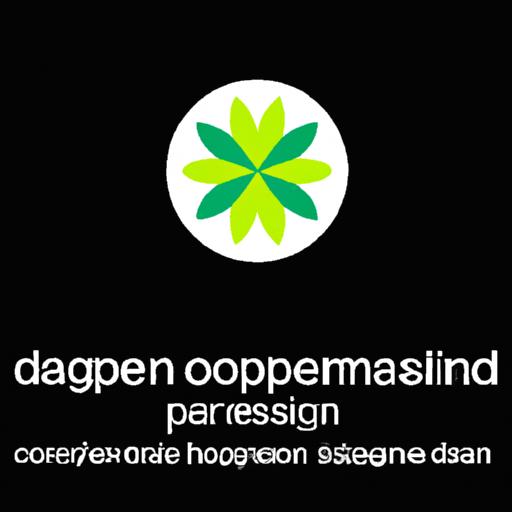Copenhagen Design: Denmark’s Happiness


– Are there any studies that show a correlation between Copenhagen’s design aesthetic and increased levels of happiness among residents
# Copenhagen Design: Denmark’s Happiness
When it comes to design, Denmark is often seen as a leader in the industry. The capital city of Copenhagen, in particular, has a rich history of embracing innovative and functional design that reflects the Danish culture of happiness, known as “Hygge”. In this article, we will explore how Copenhagen design plays a crucial role in Denmark’s happiness, why it is so important, and how you can experience it for yourself.
The Importance of Copenhagen Design
Copenhagen design is known for its minimalist, functional, and sustainable approach. Danish designers focus on creating products that are not only aesthetically pleasing but also practical and long-lasting. This attention to detail and quality has made Danish design highly sought after around the world.
One of the key aspects of Copenhagen design is its focus on creating spaces and products that promote happiness and well-being. The Danish concept of “Hygge” emphasizes coziness, comfort, and a sense of contentment, all of which are reflected in the design of homes, furniture, and everyday objects in Copenhagen.
The Elements of Copenhagen Design
Minimalism
Copenhagen design is characterized by its minimalistic approach, with clean lines, simple shapes, and a focus on functionality. This minimalist aesthetic creates a sense of calm and tranquility in living spaces, promoting a feeling of relaxation and well-being.
Sustainability
Sustainability is a core value in Danish design, with a focus on using eco-friendly materials and production methods. This commitment to sustainability not only reduces the environmental impact of products but also ensures that they are of high quality and built to last.
Natural Materials
Danish design often incorporates natural materials such as wood, leather, and wool, creating a warm and inviting atmosphere. These materials not only add a touch of luxury to living spaces but also contribute to a sense of connection to nature, which is known to have a positive impact on mental health.
Experiencing Copenhagen Design
If you want to experience Copenhagen design for yourself, there are several ways to do so:
Visit Design Museums and Galleries
Copenhagen is home to several world-class design museums and galleries, such as the Design Museum Denmark and the Danish Architecture Center. These institutions showcase the best of Danish design history and contemporary works, giving you insight into the principles and aesthetics that define Copenhagen design.
Shop for Danish Design
Copenhagen is filled with design shops and boutiques where you can find a wide range of Danish furniture, homeware, and fashion. Whether you’re looking for a classic piece of Danish mid-century furniture or a modern design object, you’re sure to find something that captures the essence of Copenhagen design.
Stay in a Design Hotel
Many hotels in Copenhagen are designed with a focus on Danish design principles, offering guests a chance to immerse themselves in the city’s design culture. Stay in a boutique hotel like Hotel Alexandra or the Radisson Collection Royal Hotel, both known for their impeccable design and attention to detail.
Benefits of Copenhagen Design
Embracing Copenhagen design in your home or workspace can have several benefits, including:
- Creating a sense of calm and relaxation
- Enhancing productivity and creativity
- Promoting sustainability and eco-consciousness
Practical Tips for Incorporating Copenhagen Design
- Choose quality over quantity when it comes to furniture and decor
- Opt for natural materials like wood, leather, and wool
- Keep spaces clutter-free and organized
- Embrace a neutral color palette with pops of color for visual interest
In conclusion, Copenhagen design plays a significant role in Denmark’s happiness by promoting comfort, functionality, and sustainability in everyday life. By embracing the principles of Danish design and incorporating them into your own space, you can create a sense of well-being and contentment that reflects the spirit of Copenhagen.
Whether you’re visiting Copenhagen or simply looking to bring a touch of Danish design into your own home, the principles and aesthetics of Copenhagen design offer a timeless and beautiful way to enhance your living space and promote happiness in your daily life.
Copenhagen, the vibrant capital city of Denmark has long been synonymous with cutting-edge design, from its modernist buildings to its sleek contemporary furniture. But beyond just aesthetics, design has a much deeper meaning in Copenhagen, as it is rooted in the concept of happiness and well-being. This unique approach to design has made Copenhagen a world-leader in creating spaces and products that prioritize the happiness and overall well-being of its citizens. In this comprehensive article, we will delve into the world of Copenhagen design and explore how it has contributed to Denmark’s reputation as one of the happiest countries in the world.
Understanding the concept of Danish happiness:
Before we dive into the specifics of Copenhagen design, it’s worth understanding the unique approach to happiness that has become synonymous with Denmark. The concept of “hygge” (pronounced hoo-gah) has gained widespread popularity in recent years, referring to a feeling of coziness and contentment that comes from enjoying the simple things in life. This idea of finding joy and satisfaction in everyday experiences is deeply ingrained in Danish culture and has a significant influence on their approach to design.
Design principles and values in Copenhagen:
One of the defining features of Copenhagen design is its emphasis on simplicity and functionality. Danish design is known for its clean lines, minimalistic aesthetic and focus on utility. This approach can be seen in everything from architecture to furniture design, where form follows function. The idea is to create products and spaces that are practical, sustainable and aesthetically pleasing. Copenhagen design also puts a strong emphasis on quality and craftsmanship, which is reflected in the high-quality materials and attention to detail in their creations.
Sustainability and the environment:
Another core value of Copenhagen design is sustainability. The Danes are leaders in environmental sustainability, and this is evident in their design choices. From renewable materials to energy-efficient buildings, sustainability is at the heart of Copenhagen’s design process. The aim is to create a balance between human needs and the well-being of the environment, in line with the Danish concept of “lykke,” which translates to happiness. This commitment to sustainability has also earned Copenhagen the title of Europe’s Green Capital in 2014.
Integrating nature into design:
The Danes have a deep appreciation for nature, and this is reflected in their design philosophy. The use of natural materials such as wood, stone, and leather is prevalent in Danish design and helps to create a connection to the natural world. Copenhagen is also known for its green spaces, with parks and gardens integrated into the city’s design. This blurring of lines between nature and the built environment has a significant impact on the well-being of its inhabitants, promoting a sense of calm and connection to the natural world.
Designing for well-being:
Copenhagen design goes beyond just aesthetic appeal and focuses on creating spaces and products that contribute to the overall well-being of its citizens. For example, the design of public spaces encourages social interaction and a sense of community, which has been strongly linked to happiness. The city is also bike-friendly, with an extensive network of bike paths, promoting a healthy and active lifestyle for its residents. In recent years, there has also been a focus on incorporating elements of biophilic design, which aims to connect people with nature in the built environment. This has been shown to have a positive impact on mental and physical well-being, making Copenhagen’s design choices not just visually appealing but also beneficial for the health of its citizens.
Real-life examples:
One of the best examples of Copenhagen design in action is the redevelopment of the waterfront area, known as the Harbor Bath. This project transformed an industrial port into a vibrant public space, with a swimming area, saunas, and a diving tower, all of which are free for public use. The design of this space takes into account the well-being of its users, promoting physical activity, social interaction, and a connection to nature. This project has been a huge success, with locals and tourists alike flocking to the Harbor Bath to enjoy its unique design and the happiness it brings.
Another example of Copenhagen’s commitment to design for happiness is the International School of Copenhagen. The school was built using biophilic design principles, creating an environment that promotes learning and well-being for its students. The school has won numerous awards for its innovative design, showing that design for happiness is not just limited to public spaces but can also have a significant impact on education.
Tips for incorporating Copenhagen design into your own life:
– Focus on simplicity: Embrace the minimalist aesthetic and prioritize functionality in your surroundings.
– Incorporate natural elements: Use natural materials and bring elements of nature into your home or workspace.
– Create a sense of community: Design your spaces to encourage social interaction and connection with others.
– Embrace sustainability: Make conscious choices to reduce your environmental footprint and promote well-being.
– Prioritize well-being: When designing a space, consider how it can contribute to the overall well-being of its users.
Conclusion:
From its focus on simplicity and sustainability to its emphasis on well-being and the use of natural elements, Copenhagen design is all about creating spaces and products that promote happiness. This unique approach has not only resulted in visually stunning designs but also contributed to Denmark’s reputation as one of the happiest countries in the world. By incorporating elements of Copenhagen design into our own lives, we can all work towards creating a happier and more sustainable world. So, let’s take a cue from the Danes and elevate our design choices to prioritize happiness and well-being.





